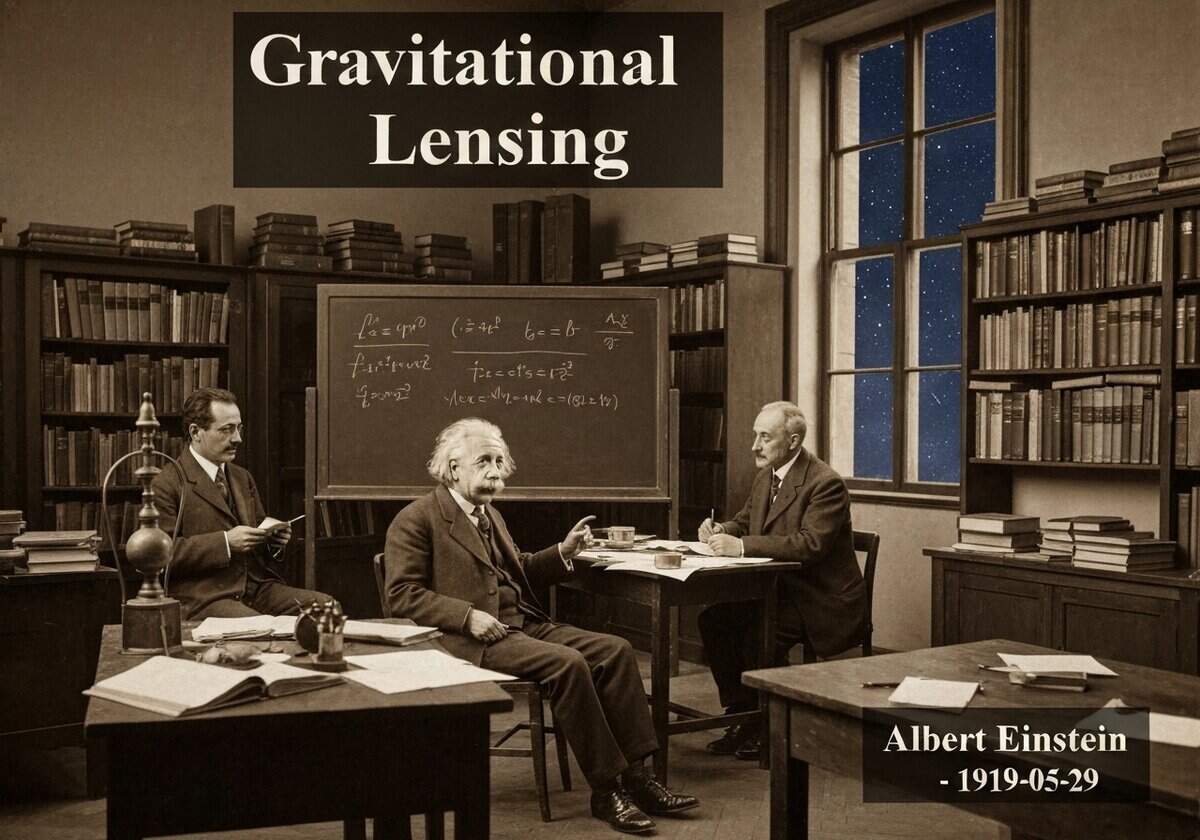广义相对论预测光的路径会因引力而弯曲。当来自遥远光源的光经过星系或恒星等巨大物体时,其路径会发生偏转。这种现象被称为引力透镜,它可以放大、扭曲背景光源,或创建其多重图像,就像一台宇宙望远镜,用于观察遥远的宇宙。


广义相对论预测光的路径会因引力而弯曲。当来自遥远光源的光经过星系或恒星等巨大物体时,其路径会发生偏转。这种现象被称为引力透镜,它可以放大、扭曲背景光源,或创建其多重图像,就像一台宇宙望远镜,用于观察遥远的宇宙。
Gravitational lensing is a direct consequence of spacetime curvature. A massive object warps the spacetime around it, and light follows the straightest possible path—a geodesic—through this curved spacetime. From our perspective, this path appears bent. The degree of bending depends on the mass of the lensing object and the light’s proximity to it. There are three main classes of lensing. Strong lensing occurs with a massive object and precise alignment, producing multiple images, arcs, or a complete ‘Einstein ring’. Weak lensing involves subtle distortions of background galaxies’ shapes, which can be statistically analyzed to map mass distribution, including dark matter. Microlensing is a temporary brightening of a background star when a smaller object, like a planet, passes in front, briefly focusing its light. This is effective for finding objects that emit little or no light.
The first confirmation came in 1919 during a solar eclipse. Expeditions led by Sir Arthur Eddington and Sir Frank Dyson observed starlight passing near the Sun and confirmed its position was shifted by the amount predicted by Einstein’s theory. This result catapulted Einstein to international fame. Today, gravitational lensing is a fundamental tool in astronomy and cosmology, allowing scientists to weigh galaxy clusters, probe the distant universe by magnifying faint objects, and discover celestial bodies that would otherwise be undetectable.
迎接新挑战
机械工程师、项目、工艺工程师或研发经理
可在短时间内接受新的挑战。
通过 LinkedIn 联系我
塑料金属电子集成、成本设计、GMP、人体工程学、中高容量设备和耗材、精益制造、受监管行业、CE 和 FDA、CAD、Solidworks、精益西格玛黑带、医疗 ISO 13485
引力透镜
(如果日期不详或不相关,例如 "流体力学",则对其显著出现的时间作了四舍五入的估计)。
相关发明、创新和技术原理
{{标题}}
{%,如果摘录 %}{{ 摘录 | truncatewords:55 }}
{% endif %}